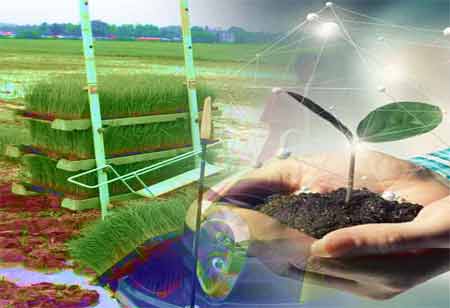Thank you for Subscribing to Agri Business Review Weekly Brief
Irrigation Systems 101: A Beginner's Guide
All farmers use irrigation systems to move water from its source to their farmed crops. Sources of irrigation water include surface water sources like rivers, ponds, and lakes, as well as groundwater sources like aquifers, springs, and wells

By
Agri Business Review | Friday, March 01, 2024
Stay ahead of the industry with exclusive feature stories on the top companies, expert insights and the latest news delivered straight to your inbox. Subscribe today.
Water is applied to crops subterraneously using a technique called sub-irrigation. Drip irrigation tape buried before planting can also be used to apply water, as can a network of pipelines and ditches. Water is applied to crops subterraneously using a technique called sub-irrigation. Drip irrigation tape buried before planting can also be used to apply water, as can a network of pipelines and ditches.
Fremont, CA: All farmers use irrigation systems to move water from its source to their farmed crops. Sources of irrigation water include surface water sources like rivers, ponds, and lakes, as well as groundwater sources like aquifers, springs, and wells. AGRIVI and other contemporary farm management solutions keep an eye on every field irrigation system, regardless of the technology, system, or irrigation method employed. Here are the five irrigation systems widely used:
Surface Irrigation Systems:
The first irrigation techniques used by mankind were surface or flood systems. An agricultural field is flooded with runoff by a surface irrigation system, usually from a canal or other water source. Fields are graded such that water flows across the whole area as they progressively slope (or even terrace) away from the water source. Crops are usually mounted in parallel beds to facilitate easy water flow along the grooves between plant roots. The only way furrow irrigation varies from flood irrigation is that the water is directed away from the source using hoses or pipes during irrigation installation.
Drip or Micro-Irrigation Systems:
In a drip or micro-irrigation system, water is pumped via underground pipes adjacent to a plant's root zone. Water is delivered by emitters that drip gently or by tiny spray heads. Drip irrigation systems utilize less water than other irrigation techniques because they distribute water accurately. Little pressure is needed to operate drip or micro-irrigation systems. They can, therefore, be utilized with minimal water pressure. Although drip irrigation is relatively new, its use is increasing, particularly in producing specialized crops like fruit and vegetables. However, farmers in high-iron areas should avoid these practices because clogged emitters can occur with drip irrigation and micro-sprinkler systems.
Sprinkler Irrigation Systems:
Water is applied through sprinkler heads using a pressured water system in sprinkler irrigation systems. Pumps are used to create pressure. There are two types of sprinkler irrigation systems: permanent and movable. Moreover, a wide variety of sprinkler heads and nozzles may be utilized. This gives the spray pattern and coverage flexibility.
Pivot Irrigation System:
Technically, sprinkler systems fall under pivot irrigation systems, sometimes called center pivot irrigation (CPI) systems. However, their popularity and distinctive qualities make them worthy of their listing. A field is covered with water in a circular pattern via pivot irrigation. Lateral pipes span ground-level buildings, such as towers. Sprinkler heads are fastened to the ends of hanging tubes or along the pipe. The typical length of a pivot irrigation span is more significant than 1000 feet. Due to their expense, CPI systems are primarily employed on more extensive acreage operations, even though they are used for nearly any crop that doesn't grow taller than the pivot. Because of this, farmers frequently employ CPI systems for crops, including maize, potatoes, minor grains, soy, and feed crops (like alfalfa).
Sub-Irrigation Water Systems:
Water is applied to crops subterraneously using a technique called sub-irrigation. Drip irrigation tape buried before planting can also be used to apply water, as can a network of pipelines and ditches. Water is applied to crops subterraneously using a technique called sub-irrigation. Drip irrigation tape buried before planting can also be used to apply water, as can a network of pipelines and ditches.





